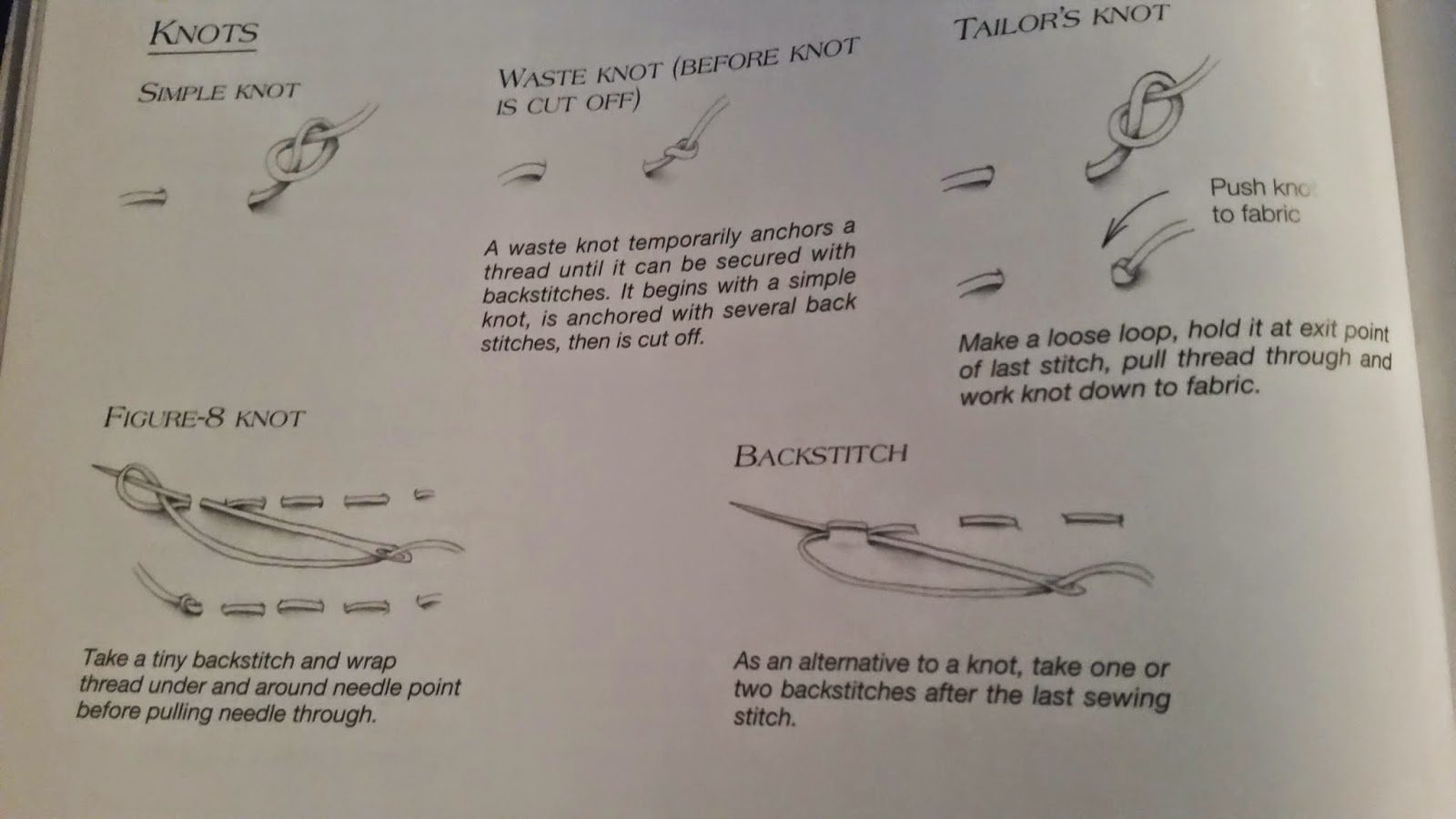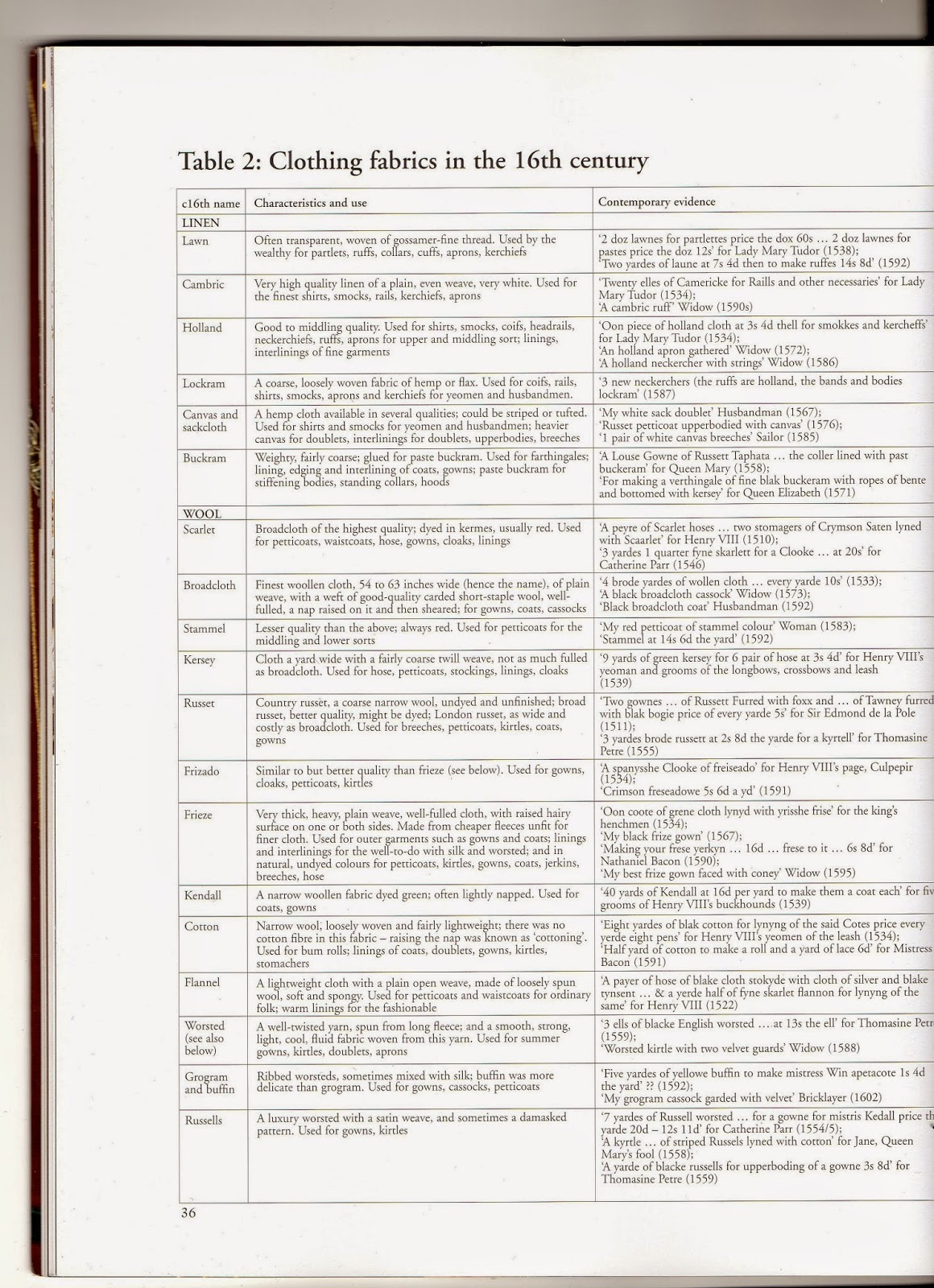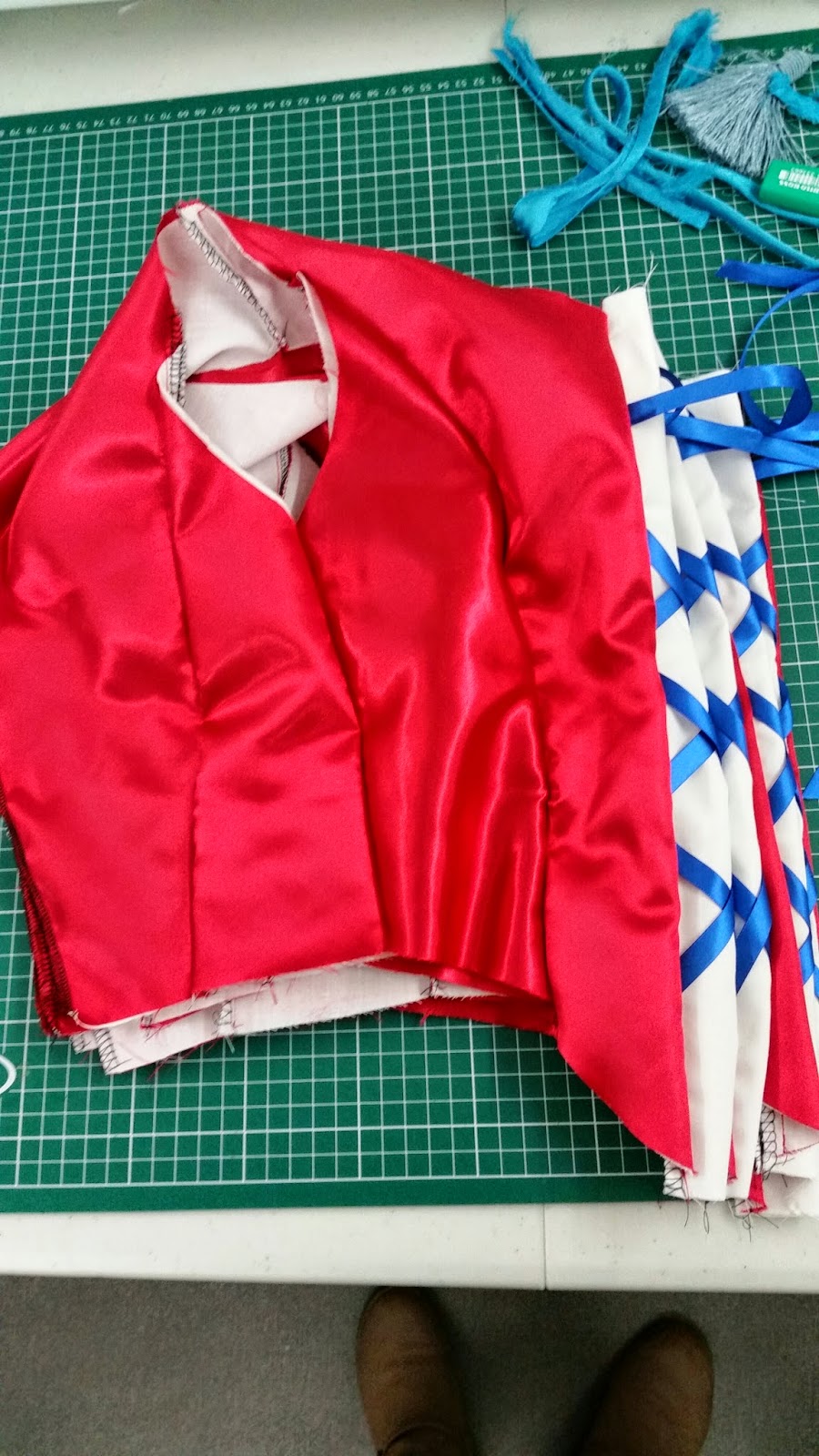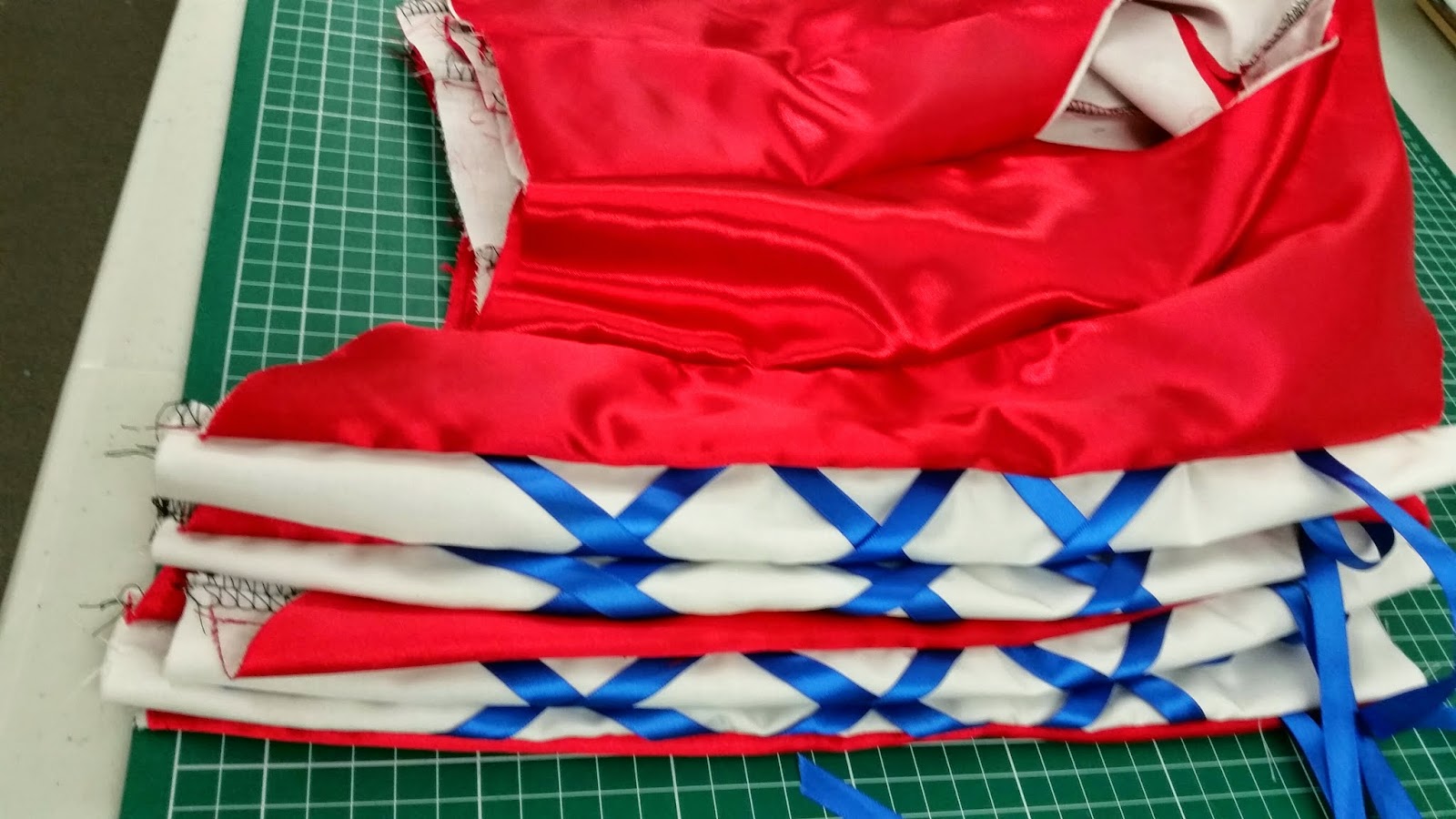This book is wonder for the history of couture and a very in-depth study of how to produce a high class garment. I thought this book would have a great list for appropriate techniques that could be used for making a suit. I was amazed by some of the things the book highlighted.
Needles:-
The higher the number the finer and shorter the needle. Use long needles for long stitches like thread tracing, uneven basting and stab stitches. Use shorter needles for general sewing, short basting stitches, hemming and finishing stitches. Use needles with oval or long eyes for coarse threads and easy threading.
Threads:-
Threads numbered with the higher number meaning the finer the thread. Silk is lettered from A to F, the lower the letter the finer the thread. Pressing thread into bees wax helps thread stop from knotting as easily.
Fabric Handling:-
When sewing white or pastel fabrics, use talcum or drafting powder to keep hands clean and cry. When sewing fragile fabric with rough hands, use a pumice stone or a mixture of cooking oil and sugar to remove hard skin.
Knots:-
 Temporary Stitches
Temporary Stitches:-
Even Basting:- Is a running stitch which measures evenly on both sides of the seam. This is used to prevent movement during construction between two or more layers of fabric. This stitch can be doubled up so that one thread runs in between the other.
Top Basting:- This is when an even or uneven basting is applied to the right side of the fabric to make it look top stitched like jeans at the seam.
Lap Basting:- This is used for bias seams that are stretched when stitched. Use an even basting stitch for 6 inches then stop cut the thread leaving a tail and start again from the point of the tail. Keep going all the way along the seam. Fastening with back stitches. (See picture to the left)
Uneven Basting:- Is a running stitch with one side of the seam longer than the other. This is used for marking garments, basting hems and straight seams when they don't need to be strong. When using this technique make sure you keep the fabric taut.
Diagonal Basting:- This is used to hold pleats, backing and interfacing to the fabric. Hold the fabric vertically and insert the needle horizontally from right to left. Pull thread through and push through either above or below that stitch. On one side of the fabric it will create diagonal lines and on the other it will create columns or dashes.
Cross Stitching:- This is a variation on diagonal basting were two rows of diagonal stitches in opposite directions are places on top of each other. This is used to mark the right side, front of the garment during construction.
Slip Basting:- This is used on the right side of the fabric when matching stripes and plaids. The fabric edges lap each other or fold over one another. Slip basting is the same technique as slip stitch just not permanent. Fold seam over and place it over the edge of the one below. Match any pattern as needed and pin. Work from right to left, taking the thread through the fabric diagonal. where it comes out sew it straight through the other side to make a dash. Continue all the way along.
Permanent Stitches:-
Running Stitch:- A small even running stitch used for seams which need very little strength such as pockets, lining, setting zips or securing folds of draping.
Slip Stitch:- This is used to attach fabric from the right side of the fabric. Example waistline seam, intricately shaped seam, hems or folded edges of a waist belt. Make sure to use a single thread. Fold the seam allowances back and pin. Catch each side of the seam as you work along the seam until it's closed. It should look like a ladder.
Fell Stitch:- This is similar to slip stitch but used over one folded edge and one raw edge. This is used to set in an under collar, waistband or sleeve. Used for flat-felled seams, finishing narrow and rolled hems.
Whip Stitch:- This is used to finish a hem. It's also used to make narrow seams and join lace. To whip stitch, insert through the back of the fabric through all layers. Draw it back through and keep going all the way along.
Baseball Stitch:- This is used to join two abutted edges without seam allowances. Start with right sides up, insert the thread into the back of the fabric and pull through. Move along a centimetre and push the needle through the wrong side of the fabric. Keep going along.
Stab Stitch:- This stitch is used for binding buttonholes, pockets, setting shoulder pads, zippers and joining especially thick fabric layers. With the garment right side up, stab the through with a small stitch and make the stitch on the other side a little longer. Continue like this all the way along.
Diagonal Stitch:- This is used to shape collars and lapels. This is also known as padstitching, this attaches the padstitch to the chest canvas.
Catch Stitch:- It looks like a row of Xs on the right side of the fabric and looks like two rows of parallel dashes on the wrong side. This stitch is very elastic, this is used to make casings for elastic and tapes. This it also used to tack pleats.
Over-catching Stitch:- This works with the whipstitch which crosses over it to create an X. Stitches are small. This helps with seams not ravelling.
Backstitch:-

a sturdy hand stitch for seams and decoration. It's often used for setting sleeves. On one side it creates a join line of stitching and on the other a line of over lapping lines.
Hemming Stitches:-
Blindstitch:- This is the most frequently used hemming stitching. This hem is hidden between the garment and the hem. Work from right to left, catch each side of the hem with a tiny stitch to create a zig-zag along the seam.
Blind Catch Stitch:- This is a much stronger, durable and more elastic than the blindstitch and is used for hemming heavy fabrics. You work from left to right this time, create the zig-zag again but double back to make it stronger.
Tailors Tacks:- This is used to mark wool fabrics.This is used to mark on pattern markings required to manufacturing the garment much as seams, darts, openings for pockets etc. They will be removed after construction.
Abutted and Butted Seam:- A flat seam joining two plies, edge-to-edge, without overlay
or seam allowance. This is done with a zig-zag stitch, sometimes this has fabric behind to help it hold together.
Stitch images taken from:-
http://en.wikipedia.org/wiki/List_of_sewing_stitches














